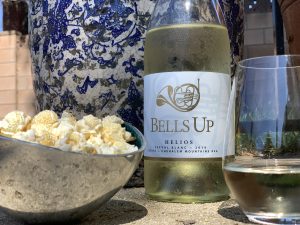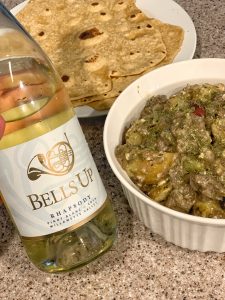Last week I completed my first unit in the WSET 2 (Wine & Spirit Education Trust Level 2) program. This week covered a lot of fundamentals like how wine is made, how to properly store and serve wine, and how to use the Systematic Approach to Tasting (SAT) to correctly identify the qualities of a wine. The lessons also covered some fundamentals of food and wine pairing, which is something I love to play around with.
I’ve talked about food and wine pairings before on my blog: be sure you read “3 Unique Oregon Wines You Must Try This Summer”, “Bubbles and Bites: 4 Techniques for Sparkling Wine Pairings”, and “Say Cheese! 5 Wine and Cheese Pairings” if you haven’t already! My WSET class this week gave me another wine and food pairing tidbit that I thought I would add to the blog for anyone looking to experiment with pairings.

Often times, we try to match specific flavors in both a meal and a wine in order to form a perfect pairing. For example, pairing a fresh citrus salad with an acid-driven, citrusy wine. This isn’t a bad way to form a pairing, but there is another marker you can use to determine which wines might best match a meal: body!
If you remember from my Dictionary for an Amateur Wine Lover post, body refers to the overall weight and texture of a wine. Some people use milk to help explain what body is. For example, consider the coating left in your mouth after a sip of whole milk versus skim milk. If a wine leaves behind a thick coating like whole milk does, that is considered a full-bodied wine. If the coating in your mouth dissipates quickly and feels thinner after a sip of wine, that is a light-bodied wine.

The structural components of wine (sugar, acidity, tannin, and alcohol) all work together to contribute to the body of the wine. Sugar and alcohol increase the body in the wine, while high levels of acidity make the wine feel lighter in body. High levels of ripe tannin lead to a fuller-bodied wine, but the presence of unripe tannin (which would feel particularly harsh in your mouth) can make a wine feel “thinner”, and therefore lighter in body.
So, how do you use body to determine wine and food pairings?
First, think about the meal you plan to have. Is it a thick, fatty steak with rich flavors that will coat your mouth? That’s an opportunity to pair a full-bodied red wine with your meal, like a peppery Syrah or full-bodied Cabernet Sauvignon. Are you having a lighter meal like seafood or a salad where the flavors tend to dissipate quickly after a bite? Then a lighter-bodied red or white wine might do the trick, such as a Gamay or Sauvignon Blanc.

You can work backwards with your wine pairings, too. If you know that you want to enjoy a full-bodied Petit Syrah with your meal, look for a rich dish to pair it with like lamb chops. If you have your heart set on a light-bodied, acid-driven white like a Gruner Veltliner, try it with a slightly spicy poke bowl (this is one of my all-time favorite pairings!).

There are a few fundamental rules with wine and food pairing, but the most important thing to remember is that is all comes down to your preference. No two palates are the same, and if it tastes good to you, that’s all that matters!
Have any food/wine pairing questions? Let me know in the comments below! If you enjoyed this post, please share on social media!

One thought on “Forget Flavor! Using “Body” for Food and Wine Pairing”
Comments are closed.